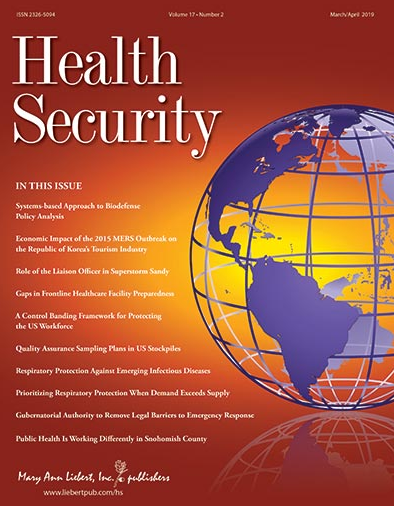 Understanding the overall biosecurity and biodefense policy landscape, the relationships between policies and their effects on each other, and the mechanisms for leveraging advances in science and technology to enhance defensive capabilities is crucial for ensuring that policy strategies address long-standing gaps and challenges. To date, policy analyses have been conducted primarily on single issues, which limits analyses of broader effects of policies, particularly after implementation. Here we describe the first-ever systems-based analysis of the US biosecurity and biodefense policy landscape to analyze functional relationships between policies, including examination of the unintended positive or negative consequences of policy actions. This analysis revealed a striking bifurcation of the US policy landscape for countering biological threats, with one grouping of policies focused on prevention of theft, diversion, or deliberate malicious use of biological sciences knowledge, skills, materials, and technologies (ie, biosecurity) and a second grouping on development of capabilities and knowledge to assess, detect, monitor, respond to, and attribute biological threats (ie, biodefense). An analysis of indirect effects demonstrated that policies within groups may result in mutual benefit, but policies in different groups may counteract each other, limiting achievement of the policy objectives in either group.
Understanding the overall biosecurity and biodefense policy landscape, the relationships between policies and their effects on each other, and the mechanisms for leveraging advances in science and technology to enhance defensive capabilities is crucial for ensuring that policy strategies address long-standing gaps and challenges. To date, policy analyses have been conducted primarily on single issues, which limits analyses of broader effects of policies, particularly after implementation. Here we describe the first-ever systems-based analysis of the US biosecurity and biodefense policy landscape to analyze functional relationships between policies, including examination of the unintended positive or negative consequences of policy actions. This analysis revealed a striking bifurcation of the US policy landscape for countering biological threats, with one grouping of policies focused on prevention of theft, diversion, or deliberate malicious use of biological sciences knowledge, skills, materials, and technologies (ie, biosecurity) and a second grouping on development of capabilities and knowledge to assess, detect, monitor, respond to, and attribute biological threats (ie, biodefense). An analysis of indirect effects demonstrated that policies within groups may result in mutual benefit, but policies in different groups may counteract each other, limiting achievement of the policy objectives in either group.
The current policy landscape predominantly focuses on pathogens and toxins, having limited focus on rapidly changing biotechnologies with potential to positively contribute to biodefense capabilities or introduce unknown and/or unacceptable security risk. Based on our analyses, we present actions for implementing biosecurity and biodefense policy in the United States that intends to harness the benefits of science and technology while also minimizing potential risks. READ MORE>>>